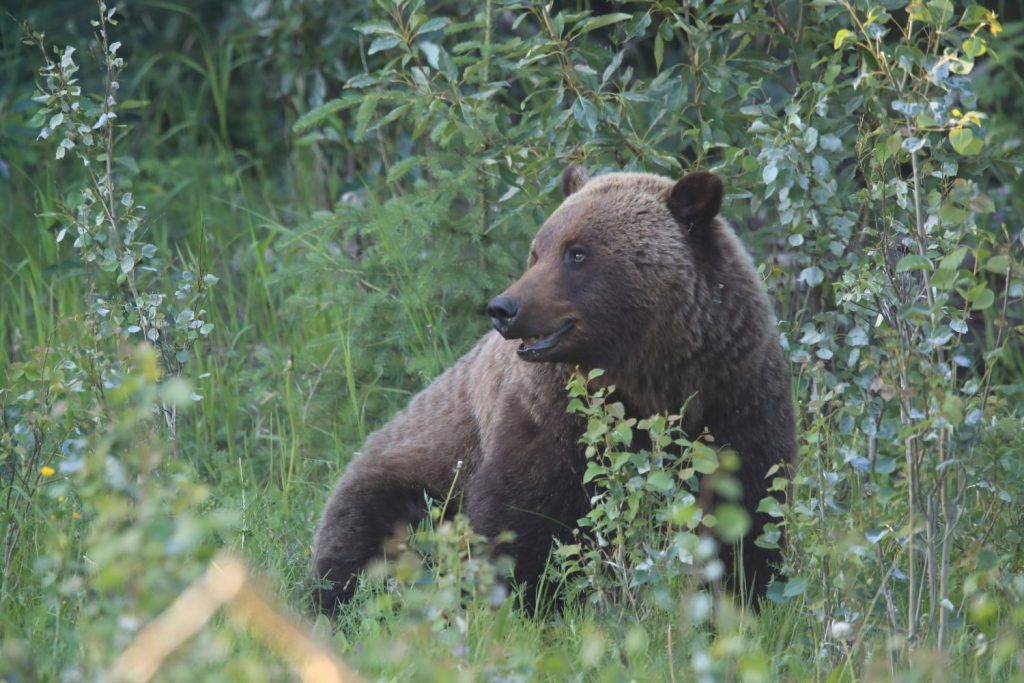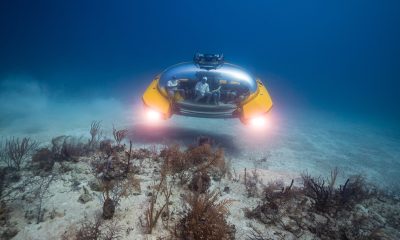New study reveals polar bears mated with grizzlies around 125,000 years ago
The same is happening in the Arctic today. The resulting hybrids are known as 'pizzlies' or 'grolars'.
Published
2 years ago onBy
Talker News
By Mark Waghorn via SWNS
Polar bears mated with grizzlies around 125,000 years ago, according to new research.
The finding is based on the skull of an ancient juvenile unearthed on Alaska's northern coast.
Scientists mapped its complete genome by obtaining DNA from a fragment of powdered bone.
The creature carried genes from its brown cousins. It's been nicknamed Bruno - even though later analysis identified it as female.
Interbreeding happened during a warm interglacial period between the last two ice ages.
It left a surprising amount of polar bear ancestry in all modern brown bears. The phenomenon has implications for climate change.
The same is happening in the Arctic today. The resulting hybrids are known as 'pizzlies' or 'grolars'.
Over the last decade, sightings have increased. It could fuel the transmission of diseases - and change ecosystems forever. Crossbreeds found in Alaska and Canada are not genetic anomalies.
In the islands off of Southeast Alaska, bears resemble grizzlies but contain polar bear DNA - indicating decades of sporadic interbreeding,
First author Dr. Ming-Shan Wang, of the University of California, Santa Cruz (UCSC), said: "The availability of Bruno's paleogenome has made it possible to detect an ancient admixture event that impacted all living brown bears."
Admixture, the genetic exchange between differentiated populations, is common in the history of species.
The polar-grizzly cocktail is far from the only recent animal hybrid. The coywolf - a coyote-dog-wolf amalgamation - and a lynx-bobcat mix have been popping up along the northern Atlantic coast.
The more scientists analyze species’ genomes, the more they realize animals we label as 'pure breeds' actually share DNA.
That includes us. About three percent of our DNA is from Neanderthals.

The analysis found Bruno belonged to a group ancestral to living polar bears. At some point, her lineage crossed with primitive brown bears - and had sex with each other.
As a result, polar bears account for as much as ten percent of the genomes of brown bears today.
Co-author Professor Beth Shapiro, also from UCSC, said: "We never would have seen this without Bruno's genome because all living brown bears have that admixture as part of their genomes."
Despite striking differences in appearance, behavior and habitats, the species are closely related - and can readily 'hook up' when their ranges overlap.
Disappearing sea ice is forcing polar bears onto Arctic coastal areas - while brown bears expand their range northward.
Previous studies of ancient DNA have shown admixture has occurred in populations of brown bears at least four times between around 15,000 and 25,000 years ago. In all cases, gene flow was from polar bears.
Explained Prof Shapiro: "The admixed individuals, if they survive, do so as brown bears, perhaps because they have difficulty hunting successfully on the sea ice if they are not completely white.
"Polar bears have always been a small population with not much genetic diversity."
The international team found some evidence of possible gene flow from brown bears into Bruno's lineage.

But the absence of admixture in polar bears today supports the idea brown bear ancestry reduces fitness for life as a polar bear.
Polar bears diverged from brown bears about 500,000 years ago. They evolved into highly specialized hunters of marine mammals on the Arctic sea ice.
Brown bears, in contrast, are generalists ranging widely across North America, Europe, and Asia.
Bruno lived during a time of changing climate after the peak of a warm interglacial period when temperatures and sea levels were considerably higher than they are now.
Similar conditions can be expected in the future as a result of rapid climate change driven by the burning of fossil fuels and other human activities.
As Arctic sea ice declines, many polar bear populations are already struggling to survive.
Co-author Dr. Ian Stirling, a polar bear biologist with Environment and Climate Change Canada, said: "If the rapid, unnatural, and severe human-caused warming of the Arctic we are documenting today continues unabated, it is uncertain whether polar bears will have a sea ice habitat to return to and survive genetically."
Textbooks say brown bears aren't supposed to inhabit the same environments. Polar bears are marine mammals. Grizzlies are terrestrial.
But as the Arctic warms, sea ice is shrinking and the tundra is expanding. Disparate populations are meeting, fornicating - and creating a new breed that's capable of reproducing.
Prof Shapiro said: "We shouldn't be surprised to see admixture happening again today as the climate changes and these species are overlapping and encountering each other again in the wild.
"Climate change allows gene flow to occur between what we think of as different species."
Climatic shifts that have brought polar bears and brown bears together in the past include glacial periods when sea ice was more extensive.
They mixed in southeast Alaska, Japan, Russia - and even Ireland. Brown bears acquired additional polar bear genes on top of the ancient admixture revealed by Bruno's genome. Brown bears are now extinct in Ireland.
As for what brown bears might have gained from their polar bear ancestry, scientists can only speculate.
Prof Shapiro said: "It is possible brown bears got something cool from polar bears, but we can't say for sure at this point."
The researchers stumbled on Bruno's skull by chance. They were walking the Beaufort Sea coastline in 2009 surveying for recent erosion. It was resting just above the high tide line.
Co-author Dr. Pamela Groves, of the University of Alaska Fairbanks, said: "We weren't even looking for bones, as typically we find ancient bones a hundred miles inland where they have been stored in permafrost along sleepy rivers.
Polar bears spend most of their lives at sea. Finding any remains is extremely rare. Bruno's ancient skull is the only one ever recorded - and the single prehistoric polar bear bone from North America.
Prof Leslie Rissler, program director at the US National Science Foundation which funded the research, said: "Understanding how past changes in climate drove interactions between organisms is critical to predicting how current changes will create new admixtures, increase disease transmission or impact natural resources or society."
The study was published in the journal Nature Ecology & Evolution.
Stories and infographics by ‘Talker Research’ are available to download & ready to use. Stories and videos by ‘Talker News’ are managed by SWNS. To license content for editorial or commercial use and to see the full scope of SWNS content, please email [email protected] or submit an inquiry via our contact form.
You may like


Metals can heal themselves just like ‘The Terminator’


Two-faced star has hydrogen on one side and helium on other


World’s oldest big game hunting weapon found


An espresso a day could keep Alzheimer’s at bay


Being bipolar significantly raises risk of premature death: study


Soccer players who regularly use head more likely to develop Alzheimer’s
Other Stories


Shop owner discovers Victorian jail cells hidden in her basement
She purchased the store having no idea about it history.


Scientists explain why there are ‘spiders’ on Mars
The creepy crawlies are actually small, dark features that form when this happens.


Doctor celebrates 2000th vasectomy with a sperm-themed cake
He says he hopes to raise awareness about the procedure.


Dog theft causes same emotional turmoil as losing a child: study
Some felt the loss was even more intense than the death of a friend or relative.


New innovative submarine looks just like a UFO
It has been specifically designed for the cruise and hospitality sectors.
Top Talkers

 Parenting1 week ago
Parenting1 week agoSingle mom details struggles of feeding her 12 kids

 Lifestyle7 days ago
Lifestyle7 days agoWoman regrets her tattoo nightmare: ‘It’s horrendous’

 Wildlife3 days ago
Wildlife3 days agoClever elephant returns visitor’s shoe that fell into enclosure

 Good News4 days ago
Good News4 days agoDisabled student takes first steps in 10 years on graduation stage

 Health4 days ago
Health4 days agoNew study reveals ‘old age’ begins later than it used to

 Broadcast1 week ago
Broadcast1 week agoHow hard is it for Americans to live sustainably?

 Environment1 week ago
Environment1 week agoHow hard is it for Americans to live sustainably?

 Work2 days ago
Work2 days agoHow much does your workspace affect productivity?
